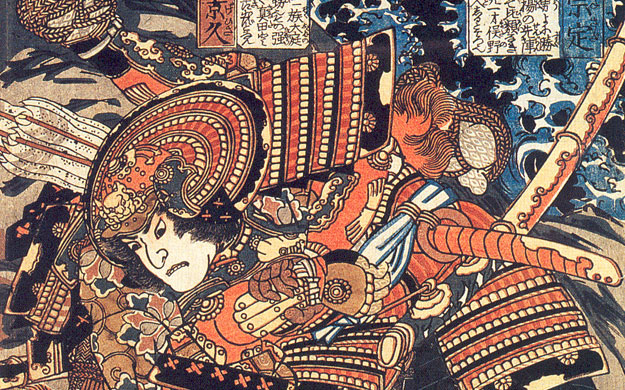
Most people will have heard of kendo, Japanese fencing, and of ju-jutsu, the Japanese art of self-defence that was the basis for sports such as judo and aikido. Far less people will have heard of kenjutsu, the Japanese sword fighting art that was the basis of samurai training from the middle ages until well into the 19th century, or will know that numerous ryu, the schools and styles in which the samurai were trained in kenjutsu, still exist. Over the past thirty years some of these schools have also been introduced in the Netherlands, where they are taught in a traditional manner by the Dutch students of Japanese masters.
Kenjutsu literally means “the art of sword fighting” or the techniques of the sword. A distinction can be made between the koryu – the traditional schools that originated between the 15th and the 19th century, and the modern schools. The traditional schools were bugei, martial arts in which self-defense and self-protection came first. Characteristic for many bugei is that they are not confined to one weapon. To be able to protect themselves, the samurai had to be all-round warriors, masters of several weapons and able to defend themselves even when unarmed. And so we see in the Katori Shinto Ryu, which originates from the middle of the 15th century, that a wide range of disciplines is practised: not only do students train with the long and short sword of the samurai, they also learn to fight with the naginata (halberd), the bo (long staff), the yari (spear) and the shuriken (the throwing knife). Unarmed self-defence techniques (yawara or ju-jutsu) are part of the programme as well. In a way therefore the term “kenjutsu” is misleading: it is better to speak of Katori Shinto Ryu bujutsu (martial knowledge).
Because of the martial aspect the practiced techniques are not adapted to the requirements of a sports competition. All techniques are aimed at putting the opponent out of action, be it by inflicting mortal injuries or by control and disarmament. Training is focused on this aspect; all techniques are practiced by means of kata: fixed forms that are aimed at teaching the students complete control over their own weapon, body and spirit, correct intuitive responses and awareness of the actions and weapons of the opponent. This is of course a very slow and laborious process, during which the weapon has to become an extension of the body, and “normal” responses have to be unlearned in order to create a state of alertness, relaxation, and preparedness to act.
Metal weapons (the katana, the shuriken) are only used in solo practice, such as iai-jutsu, the art of quickly drawing the sword and striking. Using metal weapons when training with others would be too dangerous. Students train with each other without protection, though still with rather heavy wooden weapons. This brings a realistic edge to practice while still allowing for a margin of error; hitting an artery because of a bad parry does not have fatal consequences.
The martial character of kenjutsu can also be recognised in the traditional Japanese manners and etiquette that are used in the dojo, the training room. By adhering to this etiquette both teachers and students are expected to show mutual respect and courtesy. Only in this way the potentially dangerous martial arts, which sometimes require one to expose oneself to the attack of another, can be practiced in a safe and correct manner.






